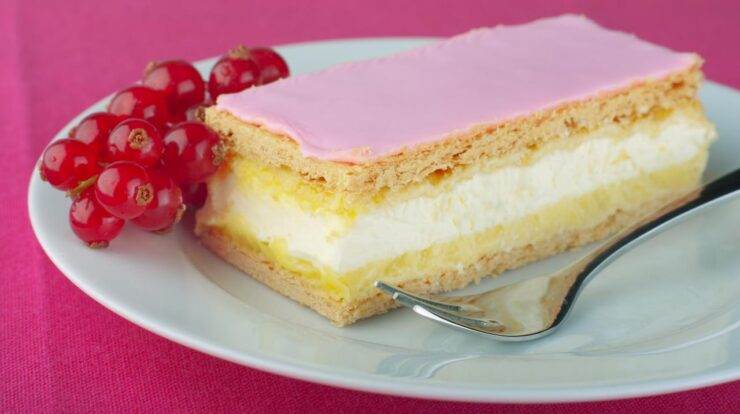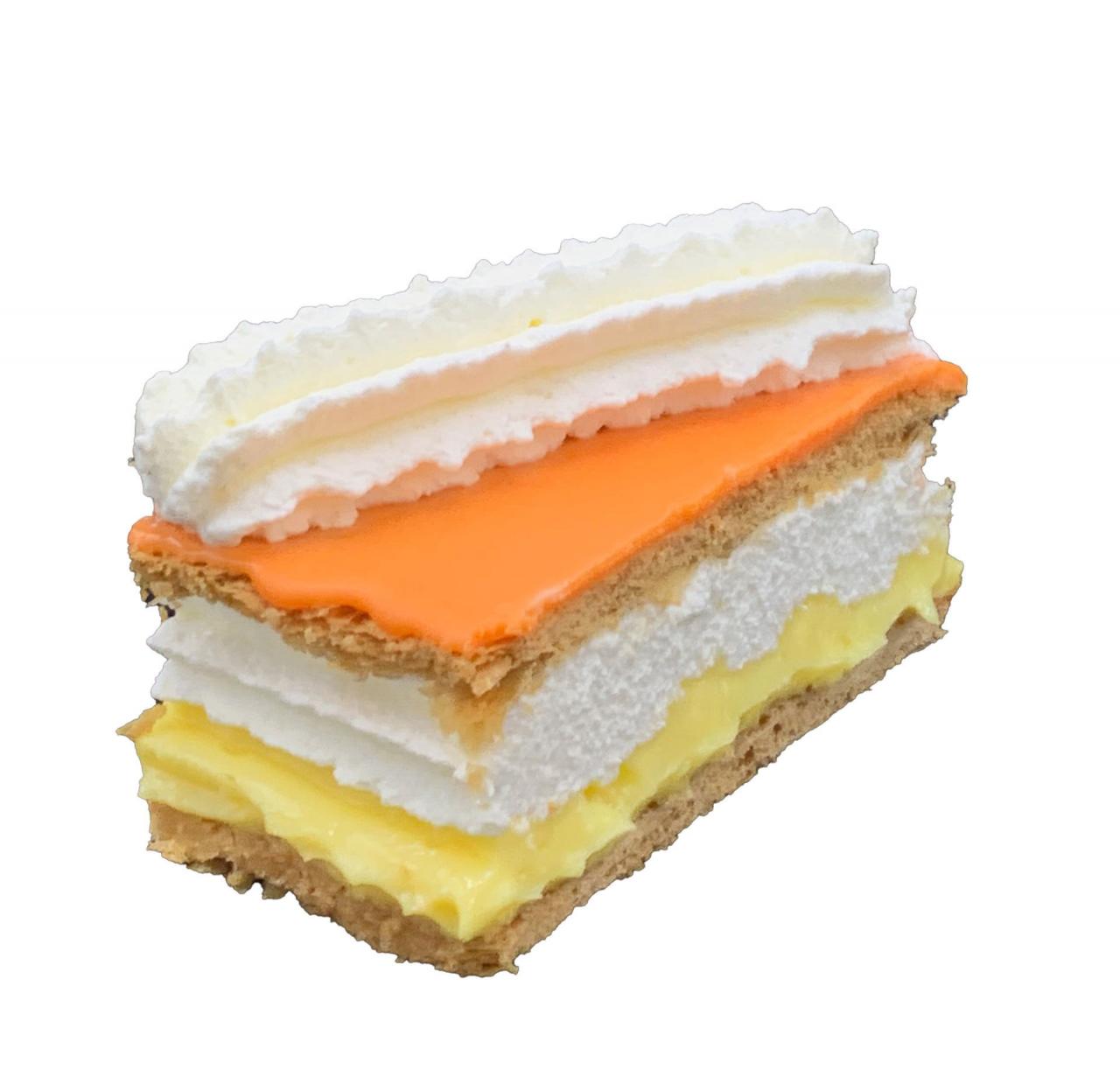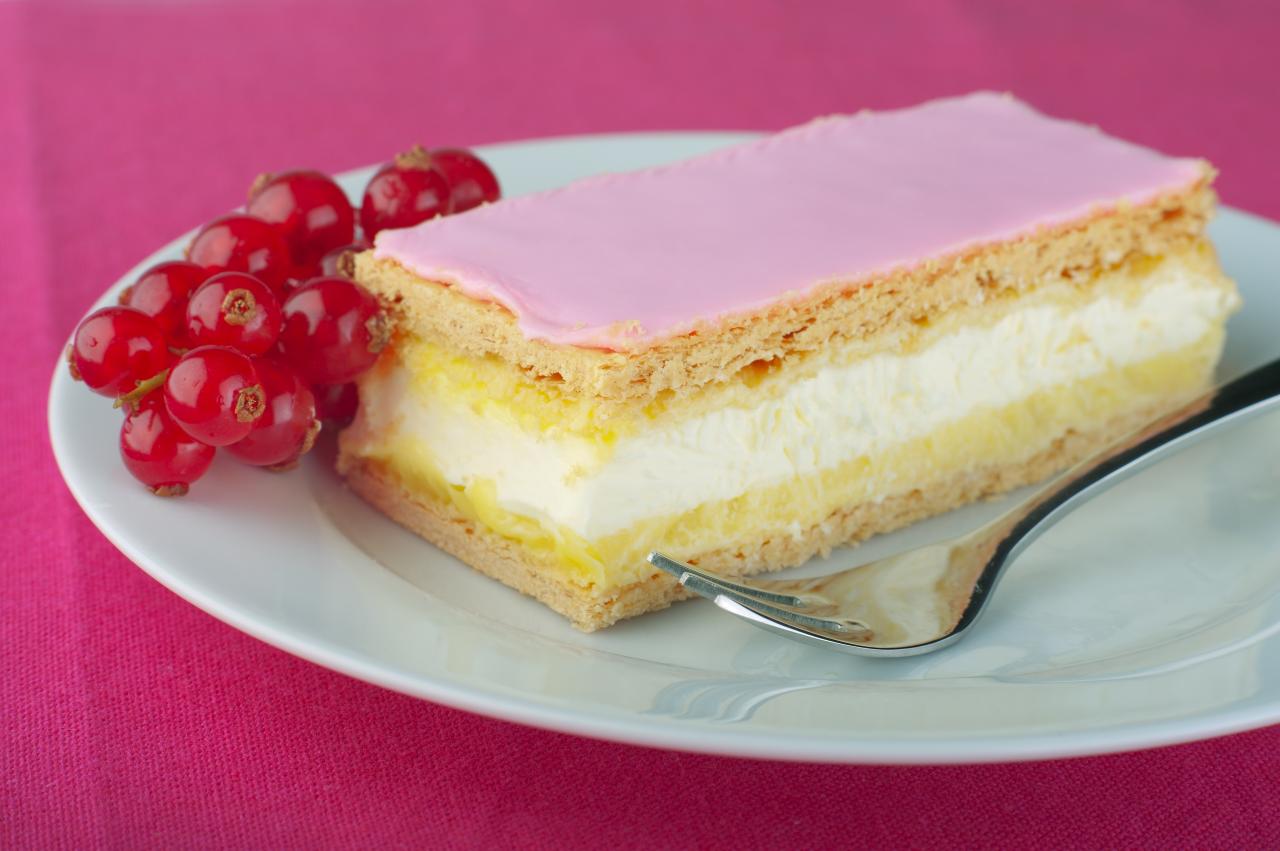
Tompouce, a delectable pastry with a rich history, invites us on a culinary journey that transcends taste buds and delves into the heart of cultural traditions. Originating from the Netherlands, this treat has evolved into a beloved icon, captivating palates and imaginations alike.
Defined by its rectangular shape, layered structure, and irresistible filling, tompouce embodies the essence of indulgence. Its flaky pastry, meticulously crafted with butter and flour, encases a velvety cream that tantalizes the senses. Whether glazed with pink fondant or adorned with intricate chocolate designs, tompouce is a visual masterpiece that commands attention.
Tompouce: A Culinary Delight

Tompouce, a delectable pastry, has captured the hearts and taste buds of many around the world. With its unique shape and rich flavors, it has become a beloved treat. Let’s delve into the world of tompouce, exploring its origins, characteristics, variations, cultural significance, and presence in popular culture.
Etymology of Tompouce
The term “tompouce” originates from the Dutch language. It is believed to have been derived from the word “tompen”, which means “to stuff” or “to fill”. This aptly describes the pastry’s composition, which consists of two layers of puff pastry filled with a rich cream.
Definition and Characteristics of Tompouce
Tompouce is a square-shaped pastry with a flaky, golden-brown crust. Its signature feature is its filling, typically made with vanilla cream or whipped cream. The pastry is often glazed with a thin layer of pink or chocolate icing, adding a touch of sweetness and color.
Variations and Adaptations of Tompouce
Tompouce has undergone variations and adaptations in different regions. In Belgium, for example, it is known as “tompouce” or “tompoes” and is often filled with chocolate cream. In France, it is called “mille-feuille” and may have multiple layers of pastry and cream.
Cultural Significance of Tompouce
Tompouce holds cultural significance in the Netherlands. It is a popular treat served at birthday parties, weddings, and other festive occasions. Its pink glaze is said to symbolize the cheeks of a blushing bride.
Tompouce in Popular Culture
Tompouce has made its way into popular culture, appearing in literature, film, and television shows. In the Dutch children’s book series “Dikkie Dik”, the protagonist is known for his love of tompouce. The pastry has also been featured in films such as “The Fault in Our Stars” and “The Intern”.
Last Point

Tompouce has become more than just a pastry; it is a symbol of Dutch heritage and a culinary ambassador that has conquered hearts worldwide. Its presence in popular culture, from literature to film, further solidifies its iconic status. As we savor each bite of tompouce, we not only experience its delectable flavors but also embark on a journey through history, tradition, and cultural pride.
FAQ Corner
What is the origin of the name “tompouce”?
The etymology of “tompouce” remains uncertain, with theories suggesting possible origins in Dutch, French, or even Indonesian.
How is tompouce typically prepared?
Tompouce is made with a layered puff pastry dough filled with a creamy custard or whipped cream and topped with a layer of pink fondant.
What are some variations of tompouce?
Variations include different fillings such as chocolate, fruit, or nuts, as well as variations in the shape and size of the pastry.







